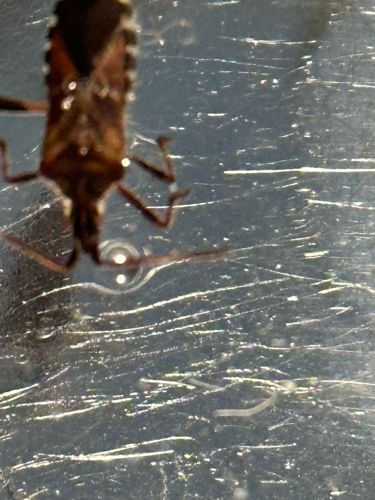Brown Marmorated Stink Bug
Scientific Name: Halyomorpha halys
Order & Family: Hemiptera (True Bugs), Pentatomidae (Stink Bugs)
Size: 12-17 mm (0.5-0.7 inches) in length

Natural Habitat
Originally from East Asia (China, Japan, Korea). Introduced to North America and Europe. Found in urban, suburban, and rural areas. They infest homes, agricultural fields, orchards, and gardens. During colder months, they seek shelter in homes and other structures.
Diet & Feeding
Polyphagous, meaning they feed on a wide variety of plants. They are significant agricultural pests, feeding on fruits (apples, peaches, pears, berries), vegetables (corn, tomatoes, soybeans, peppers), and ornamental plants. They use their piercing-sucking mouthparts to feed on plant sap, causing damage to fruits and seeds.
Behavior Patterns
Known for their aggregation behavior, especially in the fall when they seek overwintering sites in homes and other structures. They produce a foul-smelling liquid when disturbed, which is a defense mechanism. They are attracted to light and can be seen flying indoors. Their life cycle typically involves eggs, five nymphal instars, and adults.
Risks & Benefits
Risks: Significant agricultural pest causing extensive damage to crops, leading to economic losses for farmers. They are also considered a nuisance pest when they invade homes in large numbers in the fall. While not harmful to humans (they do not bite or sting), their foul odor can be unpleasant. Benefits: In their native range, they are part of the food chain, but in introduced areas, their natural predators are often absent, leading to population explosions. There are ongoing efforts to identify biological control agents.
Identified on: 9/27/2025